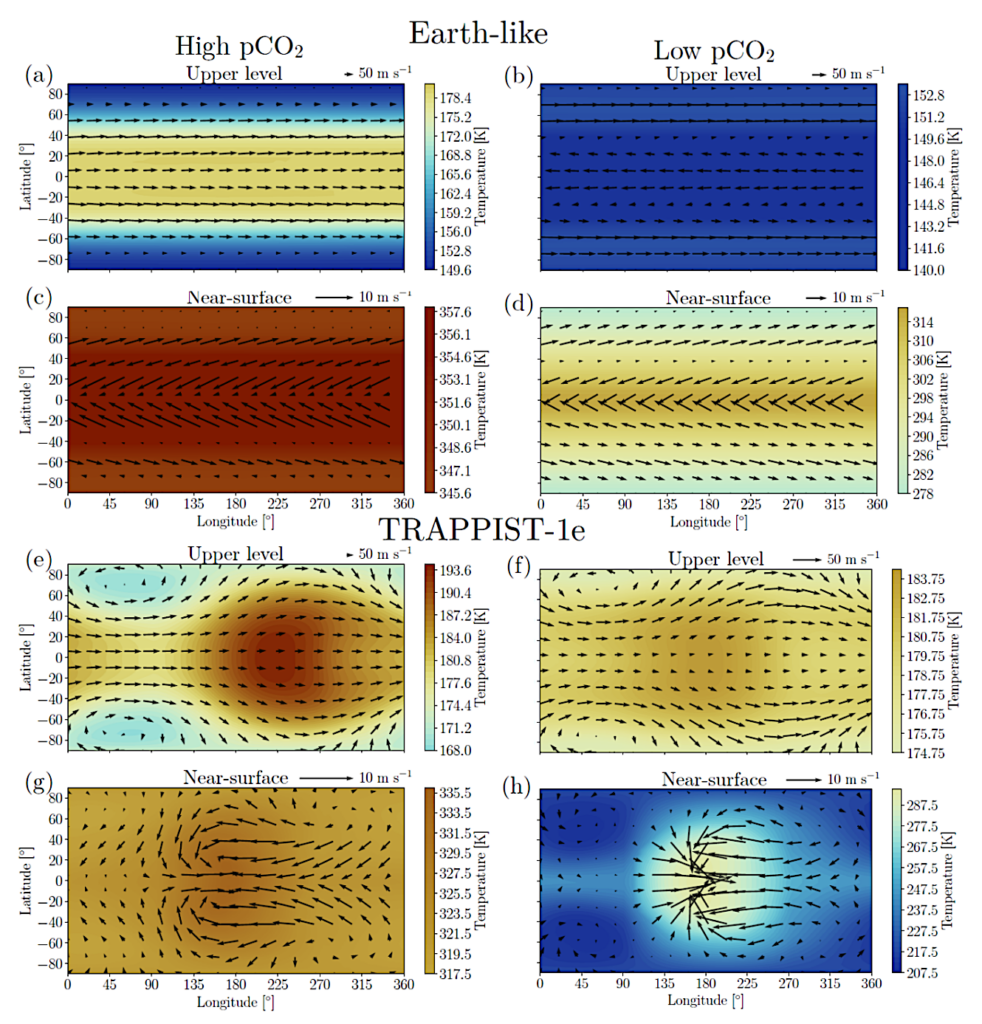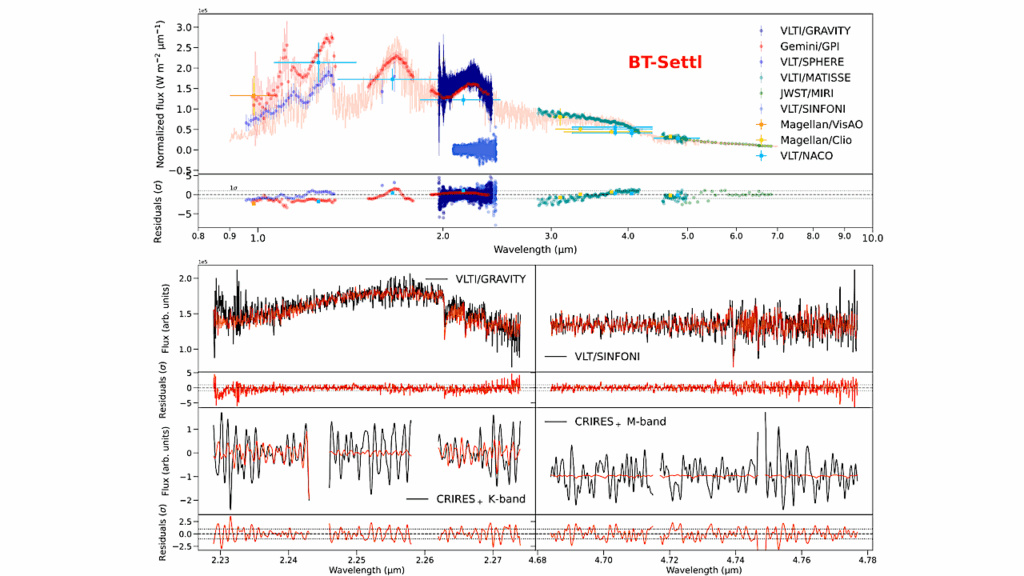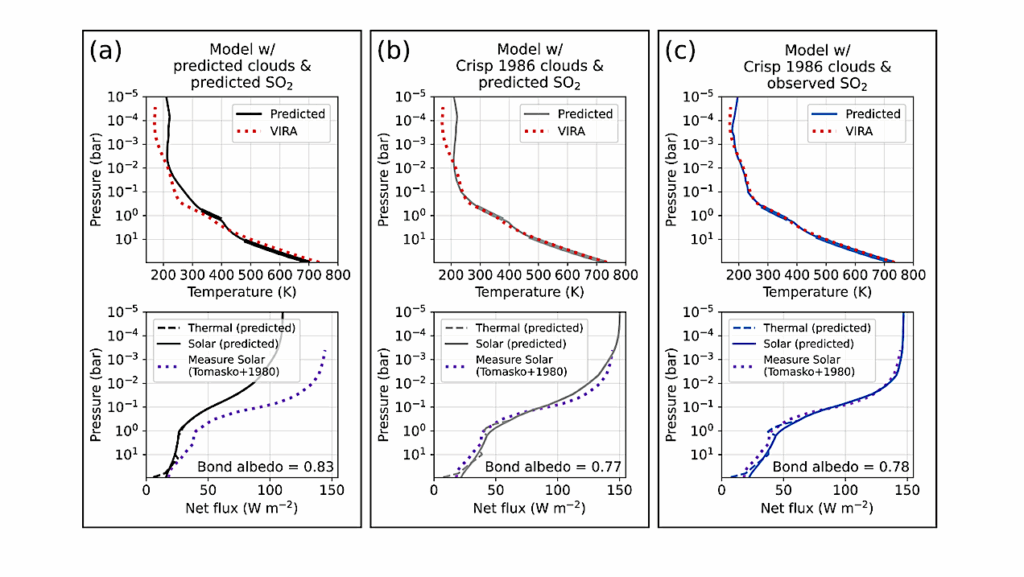Analogous Response Of Temperate Terrestrial Exoplanets And Earth’s Climate Dynamics To Greenhouse Gas Supplement

Humanity is close to characterizing the atmospheres of rocky exoplanets due to the advent of JWST. These astronomical observations motivate us to understand exoplanetary atmospheres to constrain habitability.
We study the influence greenhouse gas supplement has on the atmosphere of TRAPPIST-1e, an Earth-like exoplanet, and Earth itself by analyzing ExoCAM and CMIP6 model simulations.
We find an analogous relationship between CO2 supplement and amplified warming at non-irradiated regions (night side and polar) – such spatial heterogeneity results in significant global circulation changes. A dynamical systems framework provides additional insight into the vertical dynamics of the atmospheres.
Indeed, we demonstrate that adding CO2 increases temporal stability near the surface and decreases stability at low pressures. Although Earth and TRAPPIST-1e take entirely different climate states, they share the relative response between climate dynamics and greenhouse gas supplements.

Climatology of average temperature (K, colors) and wind speed (m s-1 , quivers) for Earthlike (a – d) and TRAPPIST-1e (e – h) ExoCAM simulations for two CO2 partial pressure (pCO2) scenarios. (a, c, e, g) High pCO2 = 1 bar; (b, d, f, h) Low pCO2 = 10-2 bar. Two vertical model levels are presented. (a, b, e, f) upper level at � = 0.956 × 10-3 , and (c, d, g, h) near-surface � = 0.992. The longitude of the substellar point in the TRAPPIST-1e simulations (e-h) is 180°. Note that maps on the two vertical levels share separate color scales. — astro-ph.EP
Assaf Hochman, Thaddeus D. Komacek, Paolo De Luca
Comments: 22 pages, 5 figures, accepted at Nature Scientific Reports
Subjects: Earth and Planetary Astrophysics (astro-ph.EP); Atmospheric and Oceanic Physics (physics.ao-ph)
Cite as: arXiv:2307.01983 [astro-ph.EP] (or arXiv:2307.01983v1 [astro-ph.EP] for this version)
Submission history
From: Thaddeus Komacek
[v1] Wed, 5 Jul 2023 01:59:20 UTC (3,160 KB)
https://arxiv.org/abs/2307.01983
Astrobiology,








